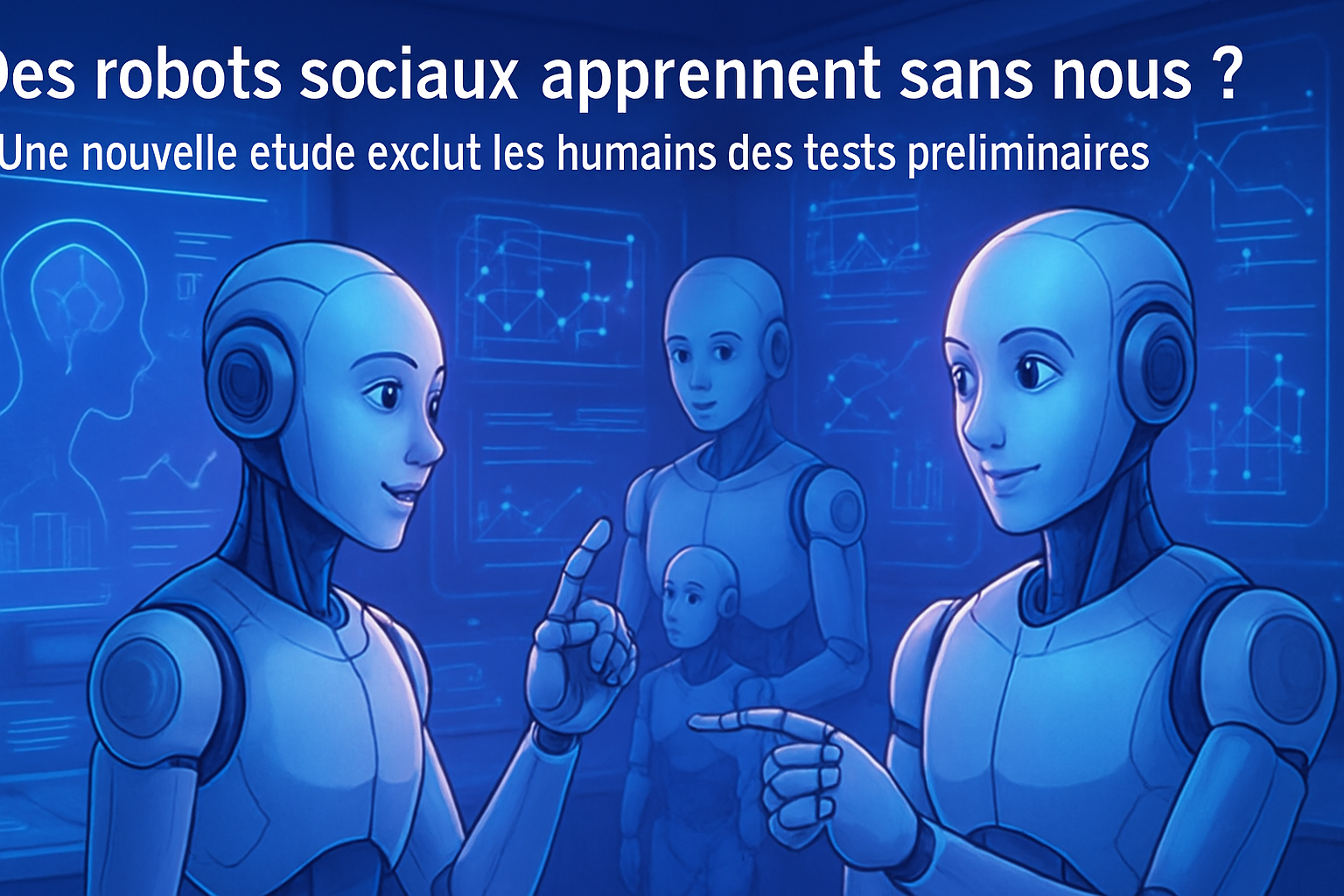Advances in social robotics offer fascinating prospects. A recent study from the *University of Surrey* and the *University of Hamburg* reveals unprecedented innovation in robot learning. The researchers developed a simulation method that completely eliminates the need for human intervention.
This revolutionary approach promotes the development of the social interactions of robots minus human biases. In reproducibility and research speed, this method opens up unprecedented horizons. Social robots are becoming autonomous. Preliminary tests no longer require humans. A promising future for education and healthcare.
A major advance in the learning of social robots
A recent study from the Universities of Surrey and Hamburg marks a turning point in how social robots are trained. This work, presented at the IEEE International Conference on Robotics and Automation (ICRA), reports on a revolutionary simulation method allowing the assessment of robots’ skills without relying on human participants. This development accelerates the research process and offers a broader scale for testing the capabilities of robots.
Predictive eye-tracking model
Using a humanoid robot, the research team designed a dynamic model for predicting eye trajectories. This model was designed to allow the robot to guess where a person might direct their gaze during a social interaction. Tests conducted on two publicly available datasets demonstrated that these robots could simulate eye movements similar to those of humans.
Dr. Di Fu, co-leader of the study and a cognitive neuroscience lecturer at the University of Surrey, emphasized: “Our method allows us to assess whether a robot is paying attention to relevant elements, just as a human would.”
A significant implication for various industries
Social robots are designed to interact with their users through speech, gestures, and expressions. Their use has proven valuable in various fields, including education, healthcare, and customer service. Well-known examples include Pepper, a retail assistant, and Paro, a therapeutic robot aimed at patients with dementia.
Reduced need for human testing
The research compared the operation of the model in real and simulated conditions. By projecting human gaze priority maps on a screen, the researchers were able to correlate the robot’s predictive attention with real-world data. This process facilitated a direct assessment of social attention patterns, thereby reducing the need for large-scale studies on human-robot interactions in the early stages of research.
Towards the future of social robotics
Dr. Fu added that “the use of robotic simulations instead of human testing in the early phases represents a major breakthrough.” With this approach, it becomes possible to test and refine social interaction models on a considerable scale, thereby making robots more capable of understanding and responding to human needs. The team plans to apply this methodology to areas such as social awareness in robotic embodiment, while exploring more complex social frameworks and different types of robots.
To learn more about related topics, you can check out articles on the AI replica of a deceased loved one, the new AI models from Google DeepMind, or the future of intelligent agents. Finally, the social network without human users is analyzed in our experience with SocialAI.
Frequently asked questions about social robots and the innovative study
What is the study on social robots conducted by the University of Surrey and the University of Hamburg?
The study focuses on the use of simulation methods to train social robots, thereby allowing them to interact more effectively without requiring human presence during preliminary testing.
How does the research enable robots to predict human gaze in social environments?
The researchers developed a visual trajectory prediction model that helps robots simulate human eye movements, thus allowing them to better understand where human attention is focused.
What are the benefits of not involving human participants in the testing of social robots?
This accelerates the research process, making it more scalable, and allows for a quick assessment of the robots’ social attention in various contexts, even in noisy or unpredictable environments.
What types of social robots can benefit from this simulation method?
Robots like Pepper, a commercial assistant, and Paro, a therapeutic robot for patients with dementia, can utilize this approach to refine their interaction with users.
How does the simulation method contribute to improving robots’ social interaction?
It allows for testing and refinement of social interaction models at scale, helping robots better understand and respond to human behaviors.
What future developments are being considered following this research on social robots?
The researchers aim to explore applications such as robots’ social awareness and adapt this method to more complex social settings with different types of robots.
How might the results of this study influence the fields of education, healthcare, and customer service?
The findings could help develop more effective robots in educational assistance, patient support, and customer service, making these interactions more natural and effective.






